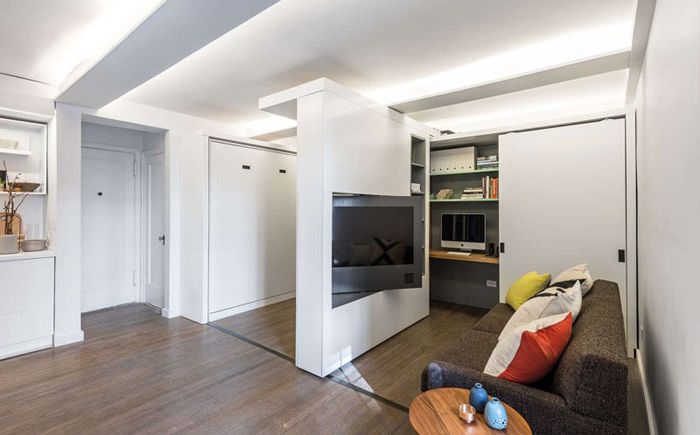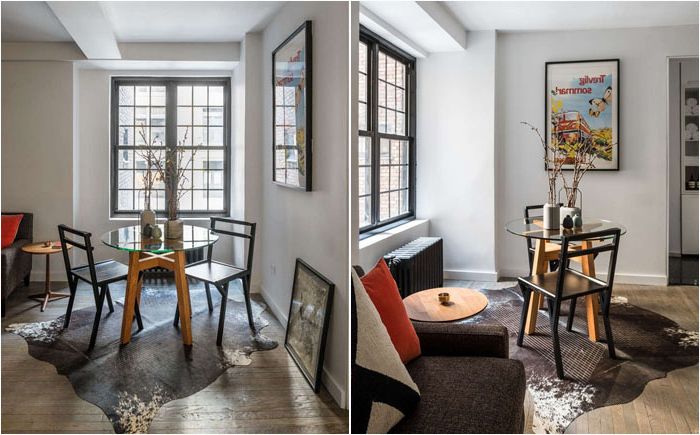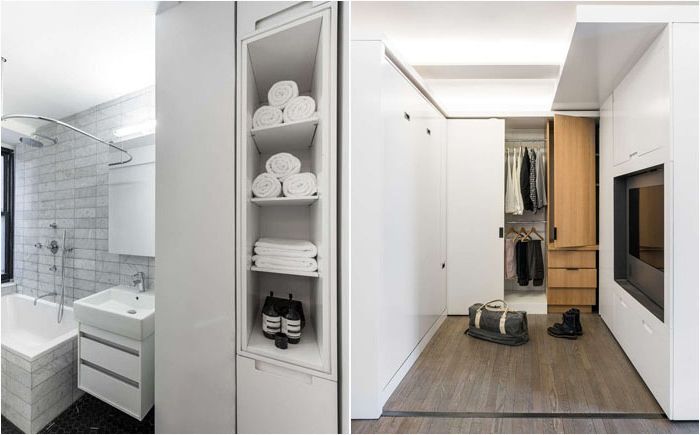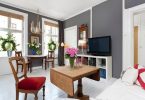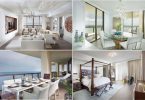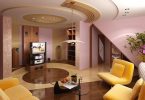Sliding wall as a way to expand the space in a small apartment
Having studied the problem of micro-housing and all the design elements necessary for it, the MKCA architectural studio began to decorate the interior of a small apartment in New York. The result was unexpected and incredibly interesting..

Sliding wall moves from one end of the room to the other
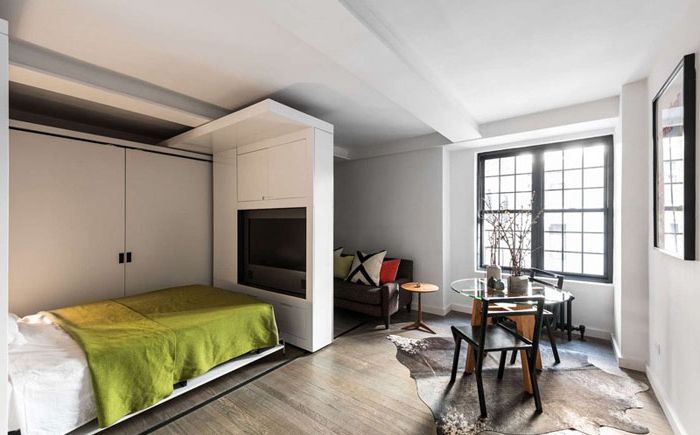
The apartment is ready for bed
The area of an apartment in New York is 36 square meters, however, it has everything you need for a comfortable stay. There is a living room, a dining room, a bedroom and a bath. There is also a seating area and a dressing room. The main attraction of the apartment is the motorized sliding wall, which can move from one end of the room to the other. This element helped to separate the night and day areas and opens a dressing room with built-in drawers and cupboards..
When fully opened, the bedroom area appears
When fully opened, there is room for a huge fold-out bed, which is very popular in small apartments. There is also a workplace with a small library and additional shelves. The computer and all other equipment are hidden in a section that also serves as a bar.
TV can be watched from different zones
Home office area
In addition, the sliding wall hides a few more interesting details, such as a rotating TV stand, storage space for all audio and video equipment. The TV can be rotated 180 degrees and can be viewed from both the living room and the bedroom. In the area opposite the sliding panel there is a sofa decorated with colorful pillows and a small round table.
Dining area
In the dining area, by the window, there is a dining table for four. Glass surface helps maintain a sense of space.
Kitchen
There was a place for a well-known bathroom and a dressing room
The kitchen has a large work area, a lot of space for storing all sorts of household items.
The bathroom has a sliding door and a laundry basket. Several open shelves allow you to store towels and other bath accessories.
An even more original solution using several sliding panels was proposed by Spanish designers from PKMN Architectures.



